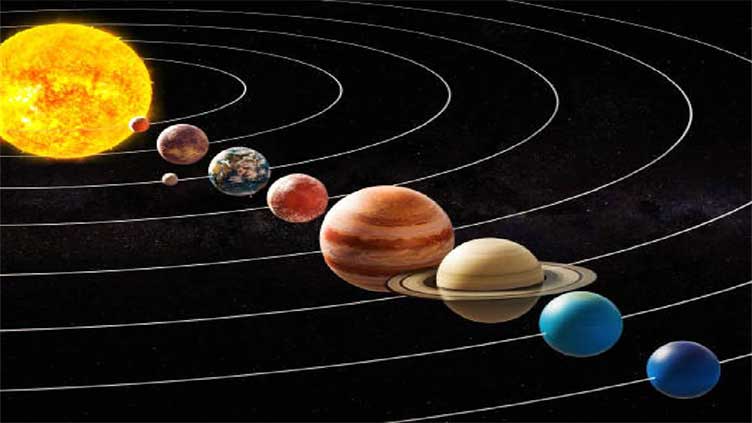Planetary Parade 2025: A rare celestial event

Pakistan
This extraordinary celestial event, planetary parade, is taking place in January and February 2025
(Web Desk) – Astronomers and astrologers are always following the movements of planets for reasons suited to their interests. Astronomers watch them for scientific reasons whereas astrologers have to make predictions of events in one’s life according to his or her zodiac sign.
There is an extraordinary celestial event taking place in 2025 – a planetary parade – in January and February. Six planets of our solar system – Venus, Mars, Jupiter, Saturn, Neptune, and Uranus – will appear to be aligned in a line looking like they are marching in a formation similar to a soldiers’ formation. This event doesn't happen every year.
Stargazers have been in for a treat since Jan 18 as the night sky is a parade ground for the six planets. They were aligned in a straight line on the night of Jan 25. This celestial spectacle will continue through early February. The planets are on the same side of the sun above Earth and most of them are visible to the naked eye under clear night skies.
According to NASA, such events, especially those involving four or more planets, are noteworthy and do not occur annually. What makes this spectacle extraordinary is the number of visible bright planets, including Mars, Jupiter, Saturn and Venus.
WHAT IS PLANETARY PARADE
The planets in our solar system travel around the sun in an orbit. They take different times to complete their journey – from 27 days to about 84 Earth years (30,687 Earth days). But occasionally a few of them will reach a point at the same time.
When we look at the planets at this time from Earth, it appears as if they're in a line, or a parade!
It's fairly common for some of the planets to do this, however seeing six in a line is a pretty rare event.
WHEN TO WATCH
The best time to watch the planetary parade is about 45 minutes after sunset. The four planets – Venus, Mars, Jupiter, and Saturn – will be visible to the naked eye just after the sun goes down. However, Uranus and Neptune could be seen through a telescope.
NASA stated that Venus and Saturn will be visible in the southwest. Jupiter will shine brightly overhead, and Mars will rise in the east.
The alignment will last for almost three hours, until Venus and Saturn set below the horizon. Venus will be the most visible and brightest of these planets. Mars will look like a bright lightbulb because of its red tinge. Saturn will appear as a tiny dot in the western sky, while Jupiter will also be similar but in the southern sky. Uranus and Neptune can be seen as tiny, bright dots but will not be visible to the naked eye due to their distance from the other planets in the alignment.
THE PARADE IS VISIBLE IN PAKISTAN
Pakistan’s Space and Upper Atmosphere Research Commission (Suparco) said last week the spectacle would be visible as moon would be waning. It added that Venus, Mars, Jupiter and Saturn would be visible to the naked eye.
The space agency said familiarity with constellations would make it easier to identify planets. It said many free stargazing applications were available to identify celestial objects in the sky.
“To find out the name of an object, access the app and point the device toward the object in the sky and the app will display the names of the objects toward which the app is pointed out,” Suparco said.
It said Mars would be visible on the eastern horizon in the constellation Gemini whereas a brighter Jupiter would be located in the constellation Taurus.
“If the sky is dark enough, you can also enjoy the beautiful Pleiades, Hyades, and the yellow star Aldebaran,” Suparco said.
ASTROLGERS' PREDICTIONS
For astrologers, this planetary alignment carries significant implications, influencing zodiac signs in profound ways.
They have predicted the planetary alignment will be lucky for zodiac signs Pisces, Taurus, Leo and Capricorn while for Aries and Aquarius it will be inauspicious.



